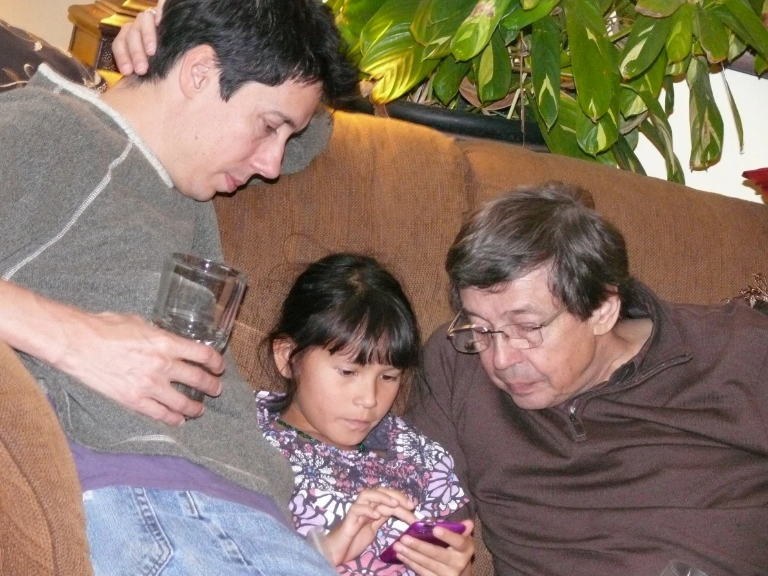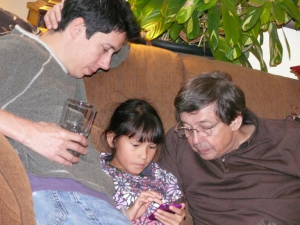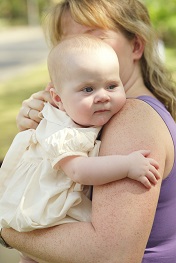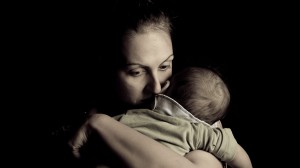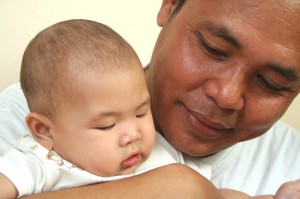 Doug Davies, M.S.W., Ph.D., was a beloved colleague, mentor and friend to many in the infant mental health community. He was a Lecturer at the School of Social Work, University of Michigan, had a private practice, and was a MI-AIMH board member for many years. After his retirement from the University of Michigan, he continued to write, provide individual and group reflective supervision, and train infant mental health and early childhood staff in Michigan, Alaska, Virginia and California. His ability to listen deeply helped each of us understand young children, their families, and ourselves better, becoming not only better therapists but better human beings. He provided listening without judgement, genuine compassion, and support that serve as a model we carry within us. We miss him dearly but he was a secure base we have internalized. His felt presence continues with us in our work and in our lives.
Doug Davies, M.S.W., Ph.D., was a beloved colleague, mentor and friend to many in the infant mental health community. He was a Lecturer at the School of Social Work, University of Michigan, had a private practice, and was a MI-AIMH board member for many years. After his retirement from the University of Michigan, he continued to write, provide individual and group reflective supervision, and train infant mental health and early childhood staff in Michigan, Alaska, Virginia and California. His ability to listen deeply helped each of us understand young children, their families, and ourselves better, becoming not only better therapists but better human beings. He provided listening without judgement, genuine compassion, and support that serve as a model we carry within us. We miss him dearly but he was a secure base we have internalized. His felt presence continues with us in our work and in our lives.
A Doug Davies Memorial Lecture was held at The University of Michigan School of Social Work on June 24, 2016. The following are excerpts from speakers, Julie Ribaudo, LMSW, IMH E®, and John Bennett, LMSW, given at that memorial. John and Julie offered personal comments about Doug, and Julie shared the beginning of a chapter written by Doug in the days preceding his death. Doug’s editors at Guilford Press had requested that he write a chapter on toxic stress and one on adolescents for a 4th edition of his text, Child Development (Davies, D. (2011). New York: The Guilford Press). Although initially not sure he wanted to commit the time to write 2 new chapters, Doug agreed, wanting to make complex scientific research easier to understand. He was excited about making information more accessible to clinicians, knowing that a better understanding of complex reactions to trauma would help make better therapists and would ultimately result in better services and outcomes for young children and families impacted by trauma.
Comments from John Bennett, Doug’s First Clinical Supervisor
“I was Doug’s first Infant Mental Health supervisor, and he was my first supervisee. About a year later, we wrote a paper together: “Intervention and Adaptation in the Third Year: The Mother-Child Dialogue.” That was about 40 years ago. We spent those 40 years as colleagues in the Child Psychiatry Division of the University of Michigan Department of Psychiatry, as office partners in private practice, and, most importantly, as friends. We talked with each other between clients and met once a month for dinner and drinks. We traded stupid jokes, talked about our childhoods and our current lives, our children, and his grandchildren. Unfortunately both of my grandchildren were born in the year following his death, but I’m sure he would have been as happy to listen to those stories as I was his. We regaled each other about being Irish — the random, existential, metaphysical (and somewhat inebriated) views of life lived. We also talked about the new ideas we were discovering — the latest being arousal moderation, brain networks, and metabolic aspects of mental and emotional functioning in childhood, among many others. This would be serious stuff, and then we would get carried away and end up like Moose and Squirrel. It was a great friendship that covered lots of territory. When he retired from the School of Social Work, I was surprised, after hearing all the praise, and how people were not going to be able to get along without him, etc., to hear the Dean end the ceremony by announcing that Doug would continue on doing essentially what he had done prior to his “retirement.” I caught him afterwards and told him how I thought it was such a dirty little Irish trick to say he was retiring, get people to say all those nice things, then go on working just like he’d done before. Doug assured me (with his glinty little Irish wink) that he didn’t know this would happen when he announced his retirement. When he died, and we had the memorial in Kalamazoo, I was hoping he would be hiding off-stage somewhere and come laughing and popping out from behind the curtains just after all the nice things had been said… but not this time. What a nice guy to have as a friend. I still miss him.”
Julie Ribaudo’s Lecture
“Doug approached his work with intellectual rigor, curiosity, and with a healthy respect for the magnitude of the messages he sought to convey. Because of that, he often wrote out entire lectures. While it could stem, on the face of it, boring to be read to (unless you are a young child with an animated parent!), listening to Doug was never boring. I heard him enough times that he would joke with me that I should leave because I had heard his material before. I never did and I never regretted it. It is a great honor and with deep respect for his profound gifts that I am going to read from Doug’s last written contribution to the field of social work and to the lives of children and their families.”
This first section comes from Child Development, 3rd edition. It is included to provide a context for the new text and to show where Doug intended the new information to be placed.*
*Editor’s note
In recent years, the effects of prolonged stress on the [hypothalamus-pituitary-adrenal (HPA)] system has been re-named “toxic stress.” “Toxic stress is the extreme, frequent, or extended activation of the stress response, without the buffering presence of a supportive adult.” Created by ongoing severe environmental stressors such as chronic trauma, abuse, and neglect, “toxic stress” is an internal response to even mild stressors that has been shaped by trauma over time. It is a biological adaptation to frequent experiences of threat and high arousal. “One of the primary consequences of early life toxic stress is HPA dysregulation, as the developing neuroendocrine system is chronically pressed into action.”
The constant secretion of cortisol in response to toxic stress also weakens the immune system. Young children become more susceptible to allergens, which are move prevalent in poverty environments. Young children exposed to toxic stress are much more likely to develop asthma.
Stress Response Systems
The function of biological stress response systems is to secrete hormones and neurotransmitters that provide adaptive responses to external stressors and to modulate internal stress. The limbic system, specifically the amygdala, is responsible for recognizing threat and mobilizing reactions to it; it is the brain’s “alarm system.” When the amygdala signals a threat, the [HPA] system secretes and releases neurohormones called catecholomines, which in turn trigger increases in the amount of cortisol in the bloodstream. Catecholomine release underlies the familiar “fight-or-flight” response, in which the individual’s alertness, concentration, appraisal of the environment, and physical energy intensify in the face of danger.
“Here, I can see Doug looking up, clearing his throat, and ad-libbing just a tad to say, “Here I am thinking of…” He was always generous in sharing his thinking process with us.”
…When faced with threat, the stress response system focuses brain activity on dealing with the threat and temporarily inhibits other functions. Animal studies have shown that the release of cortisol promotes the freeing of energy, so that the individual can take action, but at the same time suppresses the immune system, physical growth, and emotions and memory. The hippocampus, a brain area that plays a central role in learning and memory, can atrophy if it is bombarded by high concentrations of stress hormones, resulting in memory impairments.
The following section begins Doug’s work on Edition IV.
Epigenetics refers to alterations in the ways genes express themselves in response to changes in biochemical processes. These biochemical changes are in turn caused by environmental influences. The underlying structure of the genes does not change, but their “expression” — the way they regulate functioning — does change. Changes can go in the direction of a well-regulated HPA system when the child receives consistent supportive and protective care by adults; or enduring characteristics of HPA dysregulation, generally in the direction of hyper reactivity, are the likely result of ongoing, unbuffered exposure to toxic stress. When a young child is exposed to toxic stress over time, the constant secretion of the stress hormones cortisol, norepinephrine, and epinephrine leads to epigenetic changes in the HPA system. This is the process underlying over-arousal and reactivity to triggers and mild stressors we observe in chronically-traumatized children.
“Here we see Doug’s sheer brilliance in listening to and probing the meaning of aggressive behavior of young children exposed to violence. Even before the benefit of brain science to substantiate aggression as often reactive, Doug knew to listen and observe very carefully – with the aim of understanding and helping a child gain distance, psychologically, from what they had endured, and locating the trauma in the past rather than in the present. Profoundly empathic, he also worked compassionately with parents, teachers, and other professionals to understand the child as well. He taught the rest of us to do the same.”
To understand the developmental costs of toxic stress, it is useful to define allostasis, a recent concept that captures the “active process of adaptation” in response to stress.
Allostasis is defined as “maintaining stability through change.” It is “a fundamental process through which organisms actively adjust to both predictable and unpredictable events.” In animals, including humans, allostasis regulates the individual’s ongoing relationship to environmental stress through complex interactions of the nervous, endocrine, and immune systems. In the face of stress or threat — physical or psychological danger, or illness, as examples — these systems work together to promote the best possible adaptation to the environment and survival. In the face of danger, the brain and nervous system appraise the threat and prepare for action, the endocrine system secretes hormones that support action and endurance, and the immune system mobilizes an inflammation response in case of injury.
“Allostatic load,” or overload, refers to how hard these systems have to work to maintain adaptation. In conditions of chronic stress, such as child maltreatment in early childhood, the process of allostasis operates at high levels in order to protect the individual. However, these ongoing mobilizations of regulatory, internally-based protective processes become shaped, or “biologically embedded,” by constantly responding to threat: “When activated chronically and out of context, allostasis ceases to be adaptive and thus may promote disease as maltreated individuals age.” Neurobiological research has shown a number of developmental and health downsides of allostatic overload in early childhood. These include alterations in brain architecture and function. For example, maltreated children as adults show smaller prefrontal cortex volume. The prefrontal cortex houses the brain’s executive functions, including planning, attention, and impulse-control and decision-making. Neuropsychological testing of maltreated, traumatized children shows deficits in all these functions compared to normal children (Beers & De Bellis, 2002) . To the extent that these deficits become embedded, the child’s capacity for learning and flexible responses to the environment will be compromised as development proceeds. The costs of an overactive endocrine system, specifically the HPA axis, have been documented in the biology of trauma literature. Over secretion of cortisol and other stress hormones in response to chronic threat leads to an overactive and more-easily triggered stress response. Behaviorally, this translates to hyperarousal, hypervigilance, overreactions to even minor stressors, and tendencies to “act without thinking” based on fear and anxiety. When the immune system responds to threat by increasing inflammation levels, the body is preparing to fight physical injury. Children and adults with histories of maltreatment show elevated inflammation levels. Increased baseline inflammation levels disrupt the body’s ability to develop acquired immune response and lead to later vulnerability to inflammatory diseases such as rheumatoid arthritis, fibromyalgia, and chronic fatigue syndrome.
To summarize, while early allostatic adaptations to adversity by the nervous, endocrine, and immune systems promote short-term protection and survival, these same adaptations program biological responses in all three systems that are detrimental to development and physical and mental health in the long term.
“Although Doug’s last written words leave us wishing for more, they remind us how much we learned from him. His last writing is a further contribution to his enduring legacy and his capacity to help us strive for excellence and deeper understanding. He knew, and taught us to stay confident too, that through understanding, we would become more compassionate, kinder and better able to support young children and their families. Sometimes we hear sanitized versions of someone when they have died. With Doug, no sugarcoating is needed. He was simply good – through and through.”
References
Beers, S. R. & De Bellis, M. D. (2002). Neuropsychological function in children with maltreatment-related posttraumatic stress disorder. American Journal of Psychiatry, 159, 483-486.
Danse, A. & McEwen, B. S. (2012). Adverse childhood experiences, allostasis, allostatic load, and age-related disease. Physiology and Behavior, 106, 29-29.
McEwen, B. S. (2012). Brain on stress: How the social environment gets under the skin. Proceedings of the National Academies of Science of the United States of America, 109, 17180-17185.
McEwen, B. S. & Wingfield, J. C. (2003). The concept of allostasis in biology and biomedicine. Hormones and Behavior, 43, 2-15.
Steptoe, A. Hamer, M., & Chida, Y. (2007). The effects of acute psychological stress on circulating inflammatory factors in humans: A review and meta-analysis. Brain, Behavior, and Immunity, 21, 901-912.
Tarullo, A. R. & Gunnar, M. R. (2006). Childhood maltreatment and the developing HPA axis. Hormones and Behavior, 50, 632-639.


